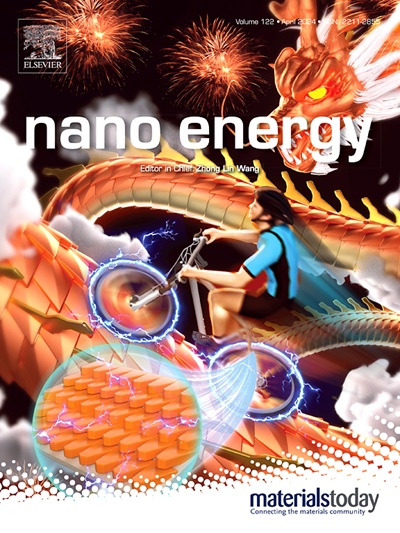Carbon Materials for Evaporation- and Moisture-Induced Power Generation
IF 16.8
1区 材料科学
Q1 CHEMISTRY, PHYSICAL
引用次数: 0
Abstract
The conversion of gaseous and liquid water through processes like evaporation and condensation produces substantial amounts of energy. These phenomenas can be harnessed via hydrovoltaic technology, where the generated energy is efficiently transformed into electricity. Carbon materials are abundantly accessible, readily obtainable, facile to fabricate, possess a substantial specific surface area, demonstrate commendable power generation capabilities, and crucially, their surfaces can be modified in numerous ways to augment the interaction with water, making them exceptionally suitable for the development of hydrovoltaic devices. This review categorizes various carbon materials based on their dimensions and examines their respective advantages. A review of the basic theory of the interaction between water and solid materials is provided, emphasizing the development of an electric double layer at their contact. The review encompasses the development of carbon-based hydrovoltaic devices, detailing their types, generation mechanisms, and application areas, along with illustrative examples. Moreover, many effective methods for improving electrical output efficiency and prolonging the operational lifespan of these devices are delineated, emphasizing the modification of carbon materials and the optimization of device structural design. The comprehensive review of the major issues confronting hydrovoltaic devices is presented, along with prospective future development ways.

用于蒸发和湿气发电的碳材料
气态水和液态水通过蒸发和凝结等过程进行转换,可产生大量能量。这些现象可以通过水力发电技术加以利用,将产生的能量有效地转化为电能。碳材料资源丰富、容易获得、易于制造、具有很大的比表面积、具有令人称道的发电能力,而且最重要的是,它们的表面可以通过多种方式进行改性,以增强与水的相互作用,因此非常适合开发水伏特设备。本综述根据各种碳材料的尺寸对其进行了分类,并探讨了它们各自的优势。文章回顾了水与固体材料相互作用的基本理论,强调了在两者接触处形成电双层。该综述涵盖了碳基水电设备的发展,详细介绍了它们的类型、产生机制和应用领域,并举例说明。此外,还介绍了许多提高电输出效率和延长这些设备运行寿命的有效方法,强调了碳材料的改性和设备结构设计的优化。报告全面回顾了水伏特装置面临的主要问题,并展望了未来的发展方向。
本文章由计算机程序翻译,如有差异,请以英文原文为准。
求助全文
约1分钟内获得全文
求助全文
来源期刊

Nano Energy
CHEMISTRY, PHYSICAL-NANOSCIENCE & NANOTECHNOLOGY
CiteScore
30.30
自引率
7.40%
发文量
1207
审稿时长
23 days
期刊介绍:
Nano Energy is a multidisciplinary, rapid-publication forum of original peer-reviewed contributions on the science and engineering of nanomaterials and nanodevices used in all forms of energy harvesting, conversion, storage, utilization and policy. Through its mixture of articles, reviews, communications, research news, and information on key developments, Nano Energy provides a comprehensive coverage of this exciting and dynamic field which joins nanoscience and nanotechnology with energy science. The journal is relevant to all those who are interested in nanomaterials solutions to the energy problem.
Nano Energy publishes original experimental and theoretical research on all aspects of energy-related research which utilizes nanomaterials and nanotechnology. Manuscripts of four types are considered: review articles which inform readers of the latest research and advances in energy science; rapid communications which feature exciting research breakthroughs in the field; full-length articles which report comprehensive research developments; and news and opinions which comment on topical issues or express views on the developments in related fields.
 求助内容:
求助内容: 应助结果提醒方式:
应助结果提醒方式:


